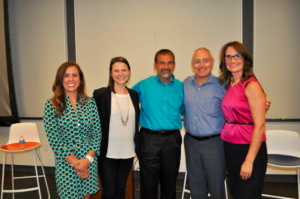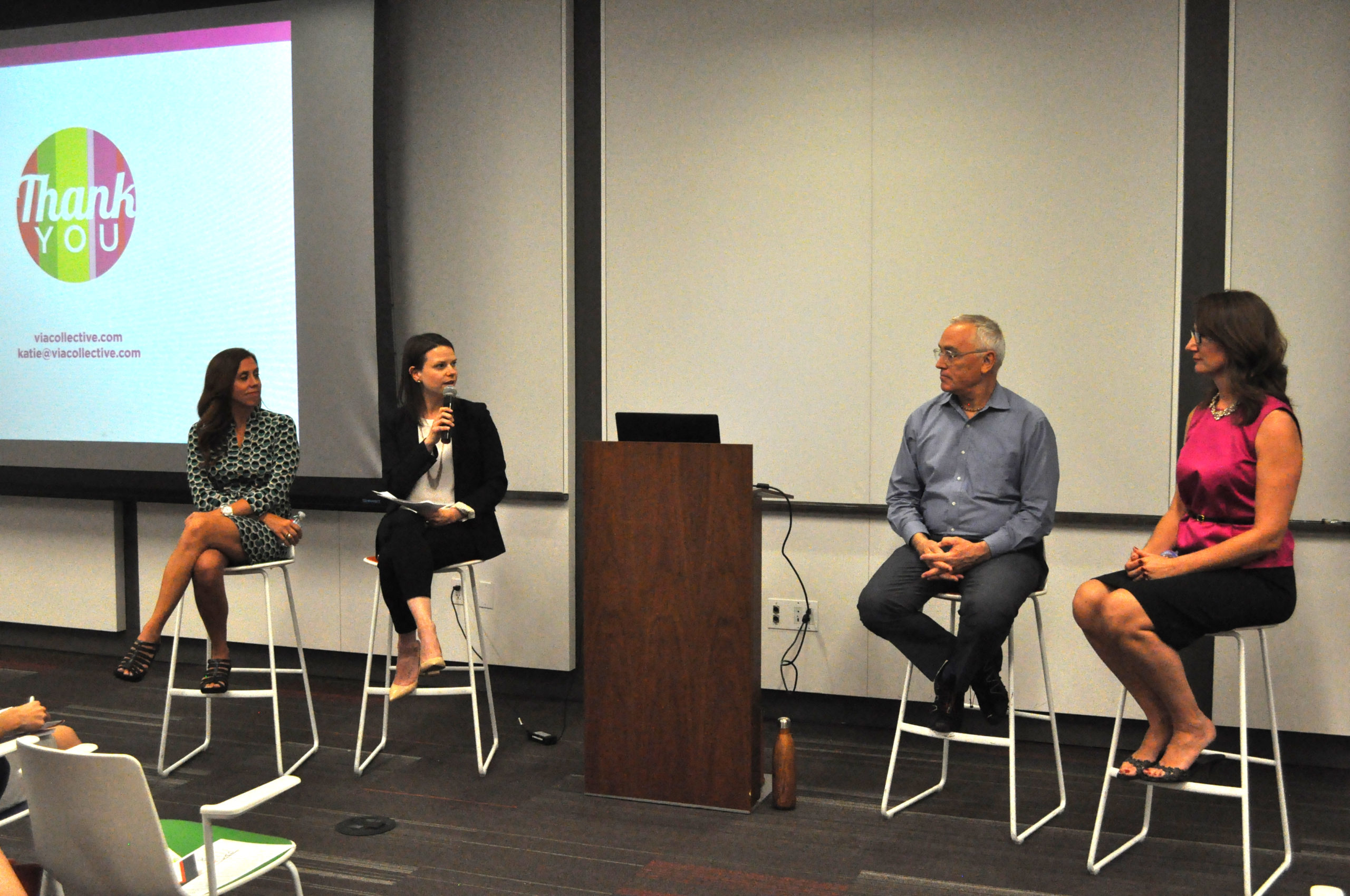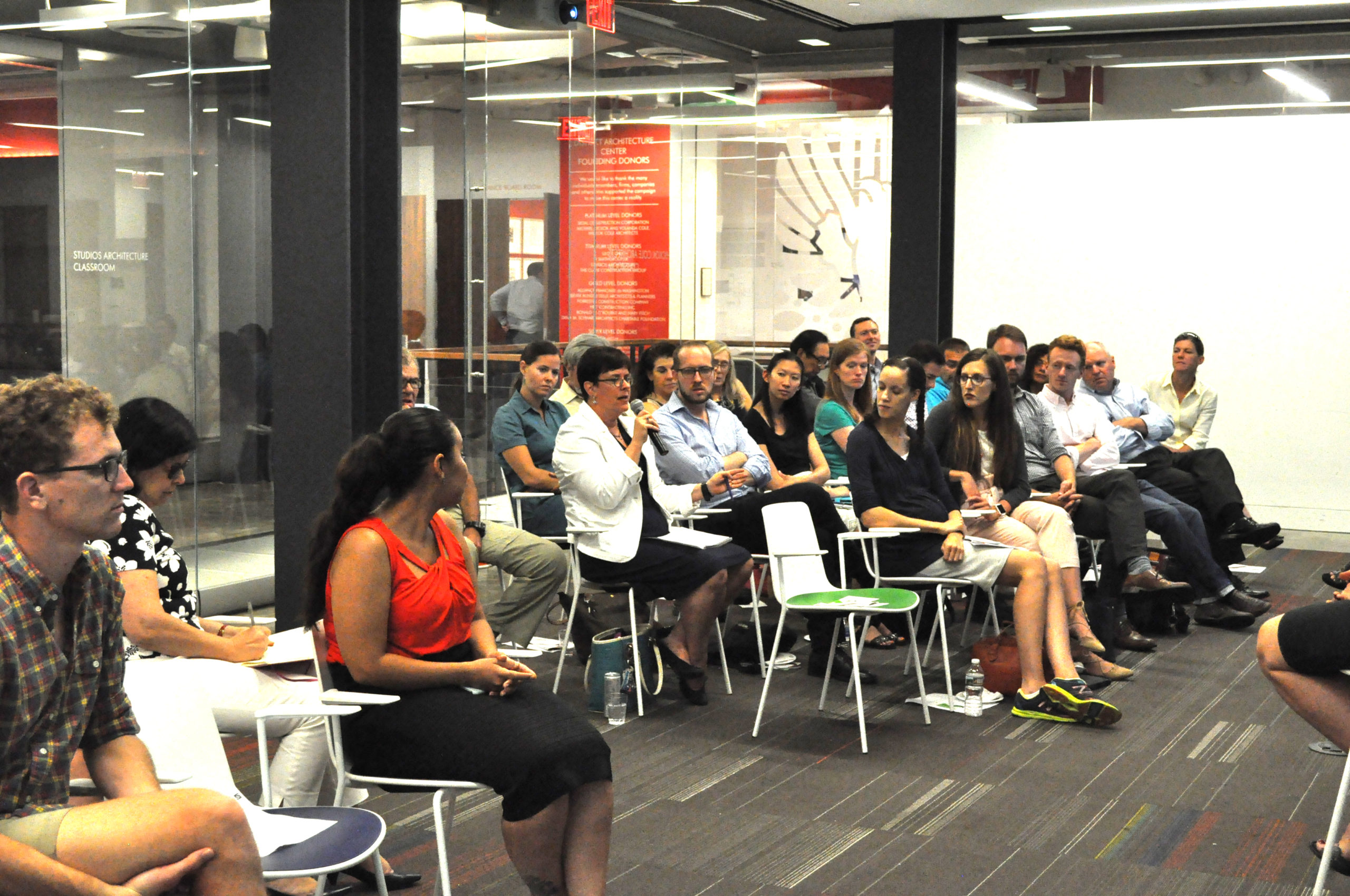- August 17, 2016
- 0 Comments
- In Accessible Design and Construction Occupant Health & Wellness
- By
Post written by Chelsea Wales, SWA Intern in Washington, DC
“Human centered design is a creative approach to design solutions that are tailored to individual users. Oftentimes human centered design is about building a deep empathy with the people you’re designing for; which is critical when we design for people with disabilities.” That’s how industry experts Katie Osborn, Hansel Bauman, and A.J. Paron-Wildes define this innovative design approach. On August 2, 2016 the American Institute for Architects Committee on Accessible Design located in Washington, DC hosted its first-ever panel event entitled, “Trending Strategies for Human Centered Design”. The District Architecture Center was bustling with people of all ages, backgrounds, and abilities as they filled the glass-walled lecture room to hear the industry thought leaders discuss the importance of human centered design.

From left to right: AJ Paron-Wildes (panelist), Victoria Lanteigne (moderator), Ben Scavone (committee co-chair), Hansel Bauman (panelist), Katie Osborn (panelist).
Moderated by SWA’s own Senior Accessibility Consultant and Accessibility Committee co-chair, Victoria Lanteigne, the panel format allowed for each human centered design professional to share their stories and expertise in their respective fields. Following the presentations, Victoria lead the panelists in a group discussion which ended with a Q&A session during which audience members asked their own questions related to human centered design.
Katie Osborn, Principal of Via Collective and Wayfinding Strategist, shared with us the thought and planning that goes into wayfinding strategies throughout the built environment and how these design elements can affect every day life. She very poignantly showed how wayfinding goes beyond signage as it incorporates architecture, print, digital, and personal interaction to achieve what she calls “integrated wayfinding.”
Hansel Bauman has greatly impacted the Washington, DC community as the Gallaudet University Architect and director of the DeafSpace Project, where he has worked in collaboration with Gallaudet University students to develop the DeafSpace Design Guidelines to codify design concepts attuned to Deaf sensibilities.
A.J. Paron-Wildes’ presentation pulled on the heartstrings as she gave her personal testimony on the importance of designing for individuals with Autism. Speaking from a mother’s perspective, A.J. was engaging and passionate about her cause and gave great insight on how to best design strategies for Autism needs, including color recommendations and signage.
It was an inspiring and informative evening at the District Architecture Center. The Committee on Accessible Design hosted a great first event and we’re looking forward to many more in the future.
To learn more about the AIA|DC Committee on Accessible Design, head to http://www.aiadc.com/committee/committee-accessible-design.
And make sure to “like” the committee on Facebook! https://www.facebook.com/AIADCCAD/.


